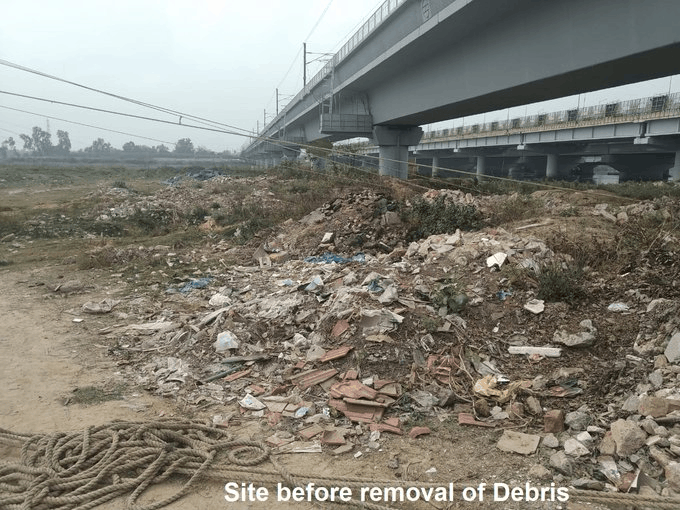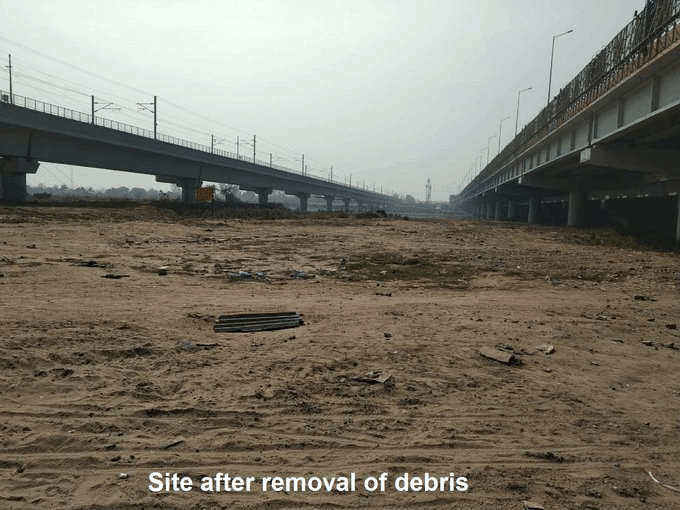There can be no dispute over the fact that the frequency, intensity and spread (new cities getting affected) of urban floods is increasing in India. The reasons are mostly known: increasing and mostly unplanned urbanisation, rural-urban migration, encroachments of water bodies, concretization of flood plains and other lands, decreasing capacity to hold, store, recharge and drain the rainwater, increasing rainfall intensities with changing climate, wrong operation of big dams and deteriorating governance.
The damages are going up, also because our forecasts are far from reliable, accurate, location-specific or with sufficient lead time. Because of our incapacity to learn lessons. Disaster preparedness or management is practically non-existent. There is no attempt to even systematically document the phenomena.
In the monsoon of 2020 alone, we saw increasing cases of cities where rivers were running through the streets: Bharuch, Dehradun, Hyderabad, Jaipur, Pune, Solapur to name a few. The trend follows from Ahmedabad, Mumbai in 2005, Surat in 2006, Kolkata in 2007, Hyderabad, Jamshedpur in 2008, Ahmedabad, Mumbai, Mahabubnagar, Kurnool and Delhi in 2009, Leh, Guwahati and Delhi in 2010, Haridwar-Rishikesh in 2013, Srinagar in 2014, Chennai in 2015, Patna in 2016, Chennai, Mumbai in 2017, Kochi in 2018, Bangalore, Gurgaon, Kolhapur, Patna, Sangli in 2019 and so on.

One bright spot is that our capacity to rescue and immediate relocation has improved, thanks to NDRF (National Disaster Response Force) and SDRFs (State Disaster Response Force). But 15 years since its formation through a powerful national act, even the National Disaster Management Authority (NDMA), has not been able to make a major dent here.
The NDMA came out with guidelines for “Management of Urban Flooding” in 2010 and for “Management of Floods” in 2008. The Urban Flood guidelines talk about drainage, master plan, response, even dam operations & mainstreaming Disaster Risk Reduction in the development process. But we can see little impact on the ground.
Every major urban development project, including townships, industries, roads, bridges, metros etc have an impact on hydrology & flood vulnerability of the city. That means, in order to achieve informed decision making, those at the helm of governance must understand the hydrological impact assessment of every such proposal. Have we seen any such assessment?
Our project approval documents or environment impact assessment reports, which should be having such assessments, mostly remain ritualistic box ticking, cut and paste exercises. The attempt to dilute the norms further under the ongoing draft EIA notification shows the direction in which we are moving.
The Central Water Commission (CWC) is the only flood forecasting organisation of India, but its performance remains pathetic. Incidents from Uttarakhand, Kashmir, North East and Karnataka have time and again highlighted that CWC’s flood forecasting system has been extremely inconsistent. It has failed miserably to raise alerts on time and save human lives and property.
Flood forecasting is such an important activity in flood management. But the NDMA seems afraid to even critique CWC’s pathetic flood forecasting performance, for no known reasons. Most importantly, there has never been an independent assessment of CWC’s work.
Lack of capacity to hold off rainwater
Everyone knows about the Standard Operating Procedures required to deal with floods: adequate drainage; good, advance quantitative precipitation forecasts that will provide estimates of rain water in specific watersheds and sub basins; models that will predict water depths at specific locations; inundation maps; early warning systems; evacuation plans, and a disaster management system that will implement all of this.
But whose baby is all this?
Even when the responsibilities are well defined (e.g. Sardar Sarovar Flood manual for downstream villages and cities), who will ensure that it gets implemented? And what will be the consequences when the actions are not implemented as per plan?
Cities need enough capacity to hold, store, recharge and drain water. Equal to the probable quantitative precipitation (PQP) or probable amount of rainfall in the city catchment area for once-in-fifty-years floods (the highest intensity rainfall in fifty years). If a city does not have that capacity, floods will be unavoidable.
This capacity keeps changing as cities develop. So does the PQP-50, with changing climate. So both Capacity and PQP need continuous recalibration for each city. And depending on the difference between the two for any given city or area, it will need preparedness to face the floods.
In the context of climate change, we need increased capacity since the intensity of rainfall is going up. In coastal areas, high tides will also enter the equation. How many cities have done such an assessment? Possibly none.

In fact, we seem to be continuously decreasing our capacity to hold/ store, recharge or drain the rain water. The new and fast spreading fad of river front development is actually reducing the drainage capacity of the cities. The rivers then will flow in the streets as it happened this monsoon in Jaipur (river front development here has concretised river sides and even beds) and Dehradun (massive encroachment of floodplains and riverbeds).
Cities taking small steps: A few examples
We have a lot of examples that show failures, but far fewer that can be called successes. However, there are elements of successful or notable examples from a number of cities.
For example, the Yamuna Monitoring Committee set up by the National Green Tribunal in Delhi is a remarkable kind of institutional innovation to protect the Yamuna river and its floodplain in Delhi. Recently, the Yamuna Monitoring Committee took quick cognizance and swung into action when certain violations were highlighted by SANDRP in an official complaint. The Committee directed Delhi Development Authority (DDA) and Delhi Pollution Control Committee (DPCC) to visit the Yamuna floodplain and submit the action reports.


Bangalore has a number of examples including lake rejuvenation and management in which citizens are majorly involved, the Million Wells initiative that has also started from outside the government.
Vadodara citizens have succeeded in halting the riverfront development in the city.
Pune citizens are raising their voices to abandon the riverfront development for the Mula and Mutha rivers.
Chennai used to be a pioneer in rainwater harvesting till about 15 years ago.
The Delhi government has initiated projects to recharge groundwater using Yamuna floodwaters in floodplains near Palla and also started taking up decentralised Sewage Treatment Plants. But it will still take a lot of doing before we can see a city as an example of ideal water and flood management.
Globally, cities are going towards sponge cities and room for the river concepts. A sponge city is a city structured and designed to absorb and capture rainwater, which will also help reduce floods. Rainwater harvested should be key for such cities. Rainwater harvesting is part of a sustainable system on an urban scale. Room for the River basically ensures that rivers have the necessary space to perform its functions including draining the flood. Buildings and infrastructure are being changed in line with such concepts.
What can ULBs do?
A lot of the disastrous consequences of urban floods can be avoided, reduced. Whose responsibility is it to ensure that? Are there consequences when dams are mismanaged and create avoidable disaster?
There is a lot that Urban Local Bodies can do in this regard. They need to have a living, flood management action plan that gets reviewed every year. They need to set up independent assessment of each flood event to learn necessary lessons, fix accountability.
The ULB needs to coordinate between different departments including those in charge of solid waste management, storm water drains, sewage, industrial effluents and building permissions. There is a need to make necessary changes in master plans, building bylaws and ensure their strict implementation.
Every city needs to have an active flood management group that will constantly monitor the situation and issue necessary alerts, directions and ensure implementation. Possibly, statutorily, the ULB should be made answerable for Urban Flood disasters.
The Government of India has a smart city programme, but the programme does not have an explicit agenda to create ‘flood-smart’ cities — cities that are able to manage heavy rainfall without creating disasters. In fact, the already high water and flood footprint of the cities are growing but they are operating in complete policy vacuum. India urgently needs a National Urban Water Policy that will also provide clearly defined guidelines for urban flood management.
As the Telegraph editorial after the recent Hyderabad floods concluded: “This wilful disregard for public safety can only be attributed to a culture of impunity for the administration. The cost of the absence of accountability is being borne by cities and the people who inhabit them.”
The problem is known, the diagnosis is available, the prescription is also more or less clear. The question is where is the road map to move towards the destination? Till we achieve that, let us be assured that the frequency, intensity and spread of urban flood disasters is only going to increase.
Nice analysis.